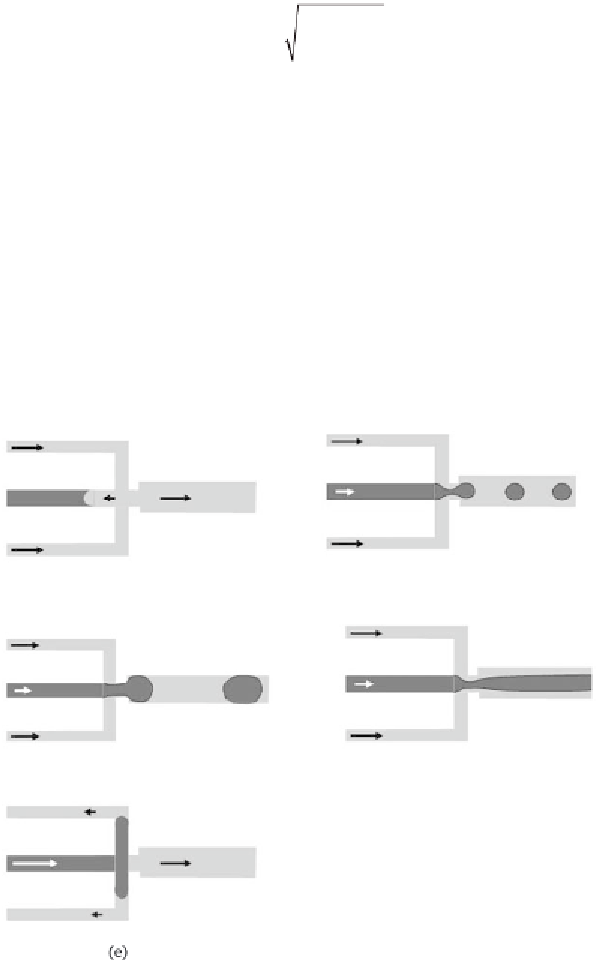Biomedical Engineering Reference
In-Depth Information
where ñ
i
,
R
thread
are the density of the alginate phase and the radius of the alginate
thread. This dimensionless number characterizes the balance between inertial and
interfacial tension forces for the dispersed phase. The second condition is
η
V
e
e
(4.98)
Ca
=
<
Ca
c
γ
This capillary number scales viscous and interfacial tension forces for the con-
tinuous phase. Equations (4.97) and (4.98) can be written as:
γ
We
c
Q Q dw
<
=
(4.99)
i
ic
i
ρ
R
i
thread
dw Ca
γ
η
e
c
Q Q
<
=
(4.100)
e
ec
e
where
w
i
and
w
e
are the width of the channels, and
d
the depth.
Let us focus now on the dripping regime. Different flow configurations appear,
according to the external actuation. These configurations are shown in Figure 4.69.
Suppose a pressure actuation of the system. As shown in Figure 4.69, depending
on the relatives values of the driving pressures
P
i
and
P
e
, the regimes can be (a) a
flow reversal in the central channel if
P
e
>>
P
i
; (b) a droplet regime; (c) a plug re-
gime—large droplets touching the walls; (d) annular flow regime—dispersed phase
flowing inside the continuous phase; (e) reversal of the flow in the external channels
Figure 4.69
The different types of flow regimes in a MFFD.









